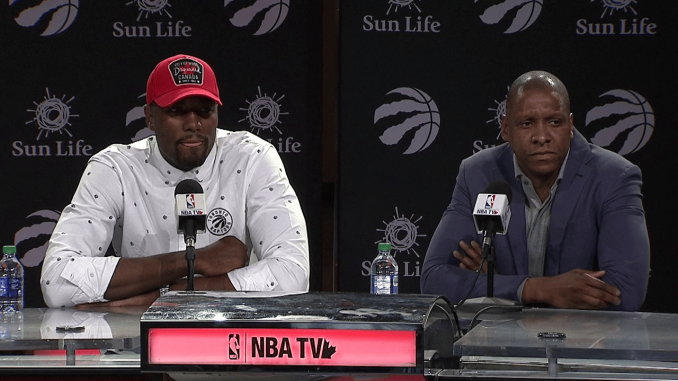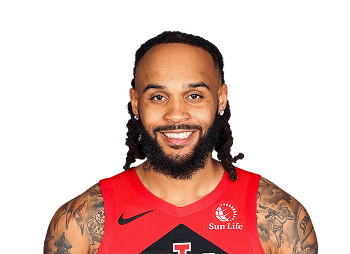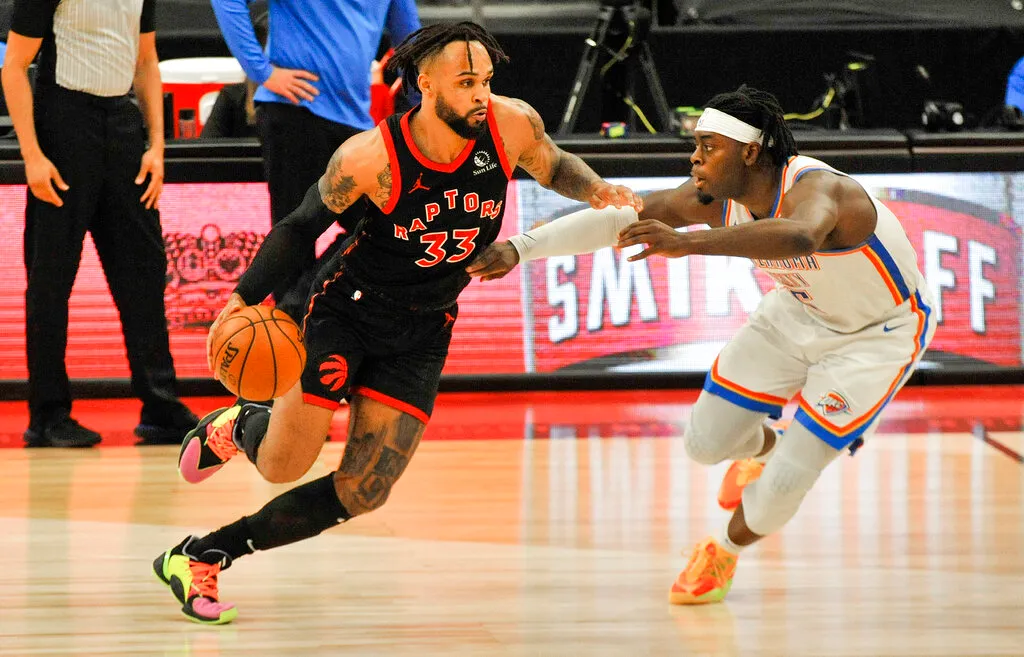
Gary Trent Jr.’s Offensive Impact Remains Huge Despite His Early Season Struggles

If the goal for Gary Trent Jr. this season was to pick up his player option and prove to the NBA that he’s a valuable rotation player and should be paid as such, this year has so far been financially disastrous.
There’d been talk that the Toronto Raptors were nearing a lucrative long-term extension with Trent in the summer but for whatever reason that has yet to transpire. Instead, what has transpired for Trent is the worst statistical season he’s had since his sophomore campaign with the Portland Trail Blazers.
The numbers are frightening: 11.1 points per game, a startling drop from 17.4 last year, his shooting percentage sits at 38.7%, the worst since his rookie campaign, and his assists, rebounds, and steals have all dipped.
For a player whose impact comes almost primarily as a scorer, that kind of lackluster impact off the bench is alarming.
And yet, for all the struggles, Trent is still a significant net positive when it comes to the Raptors’ offense. His shots might not be falling at his normal rate, but Toronto’s offense remains quite a bit better when he’s on the court.
Of the team’s rotation players, Trent ranks third in Net Rating thanks largely to Toronto’s offense being 8.1 points per 100 possessions better with him on the court.
Why is that?
“His shooting ability definitely is opening up the floor,” Raptors coach Darko Rajaković said last week. “A lot of times, actually, they’re chasing him off the (three-point) line. They’re more close to him, knowing how good of a shooter he is. And that might be opening the space for other guys as well.”
Scottie Barnes has seen Trent’s offensive value first-hand this year. Toronto’s offense is generating 118.3 points per 100 possessions when he shares the court with Trent this season. That’s in stark contrast to the 106.0 Offensive Rating Toronto has when Barnes is on the court without Trent.
In terms of efficiency, Barnes’ True Shooting percentage also increases by 4.5 percentage points with Trent on the court thanks in large part to the fact that Barnes takes a higher percentage of his shots at the rim when Trent is on the floor with him, an increase of about six percentage points.

Even in a down year in which Trent’s two-pointers aren’t falling as they normally would, he’s still connecting on three-pointers at a 36.8% clip, and the fact that he’s a career 38% three-point shooter and teams are respecting him behind the line.
“He’s a very, very important piece for our team and somebody who is helping us in so many different ways,” Rajaković said of Trent. “We got to continue using him and finding new ways to engage him on the offensive end as well.”
That’s not to say Trent is some offensive driver for the Raptors, nor that he should be in store for some huge contract this summer if his stats don’t change. What it does show, is the value Toronto’s precious few floor spacers can have in helping to generate offense for the rest of the group.
On a team so bereft of above-average three-point shooters, Trent’s impact even in a down year is coming well beyond the traditional stats.

Leave a Reply